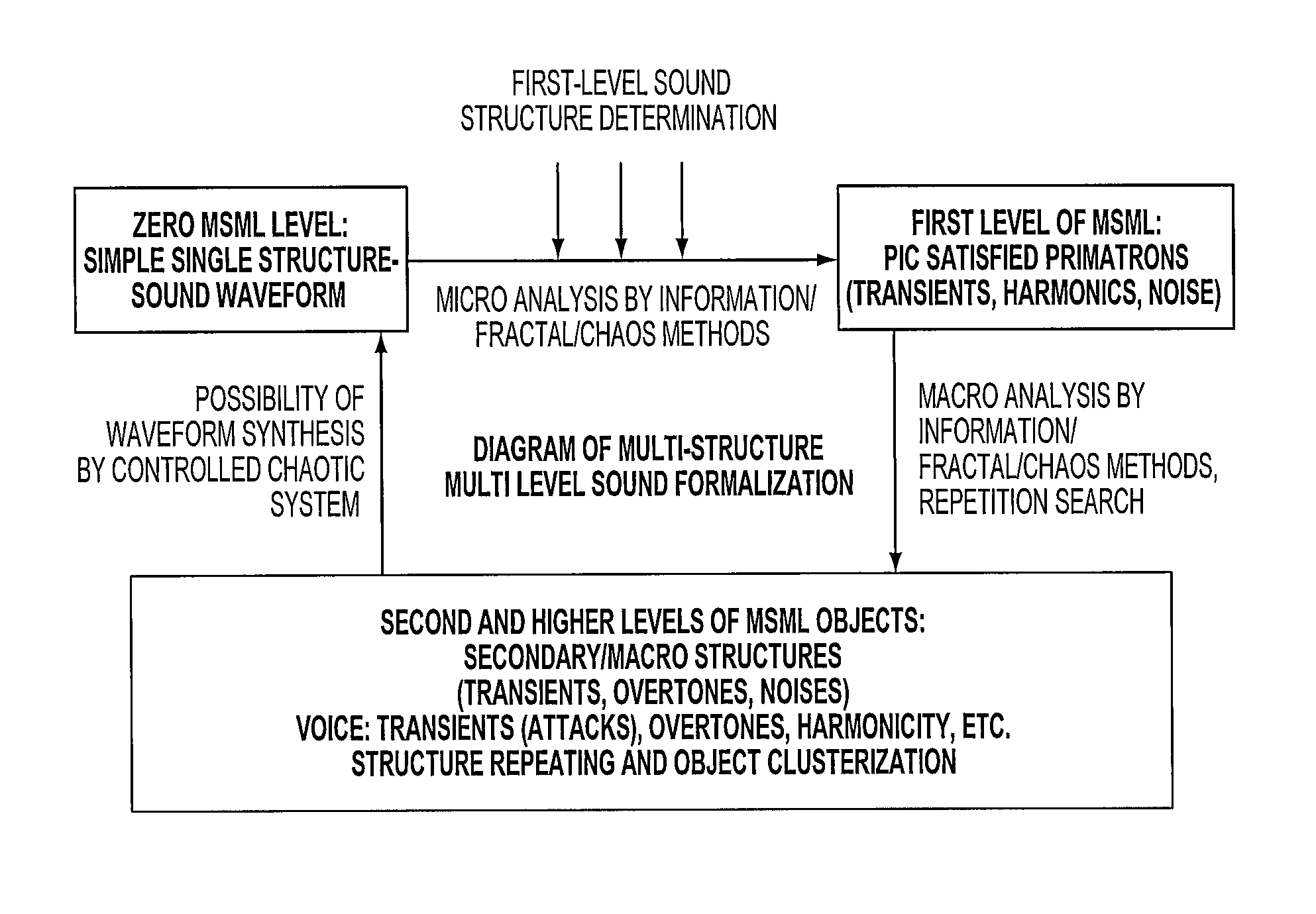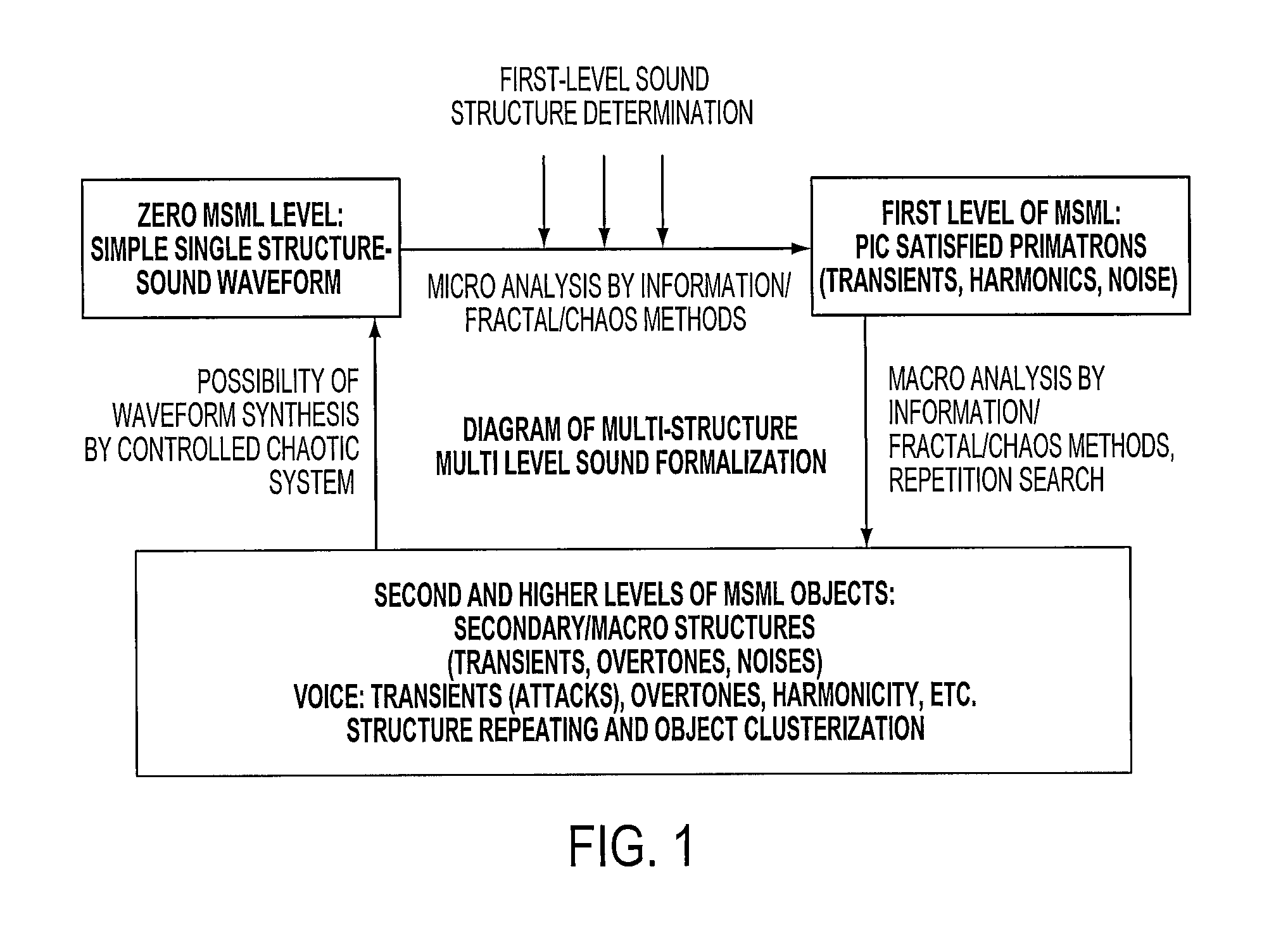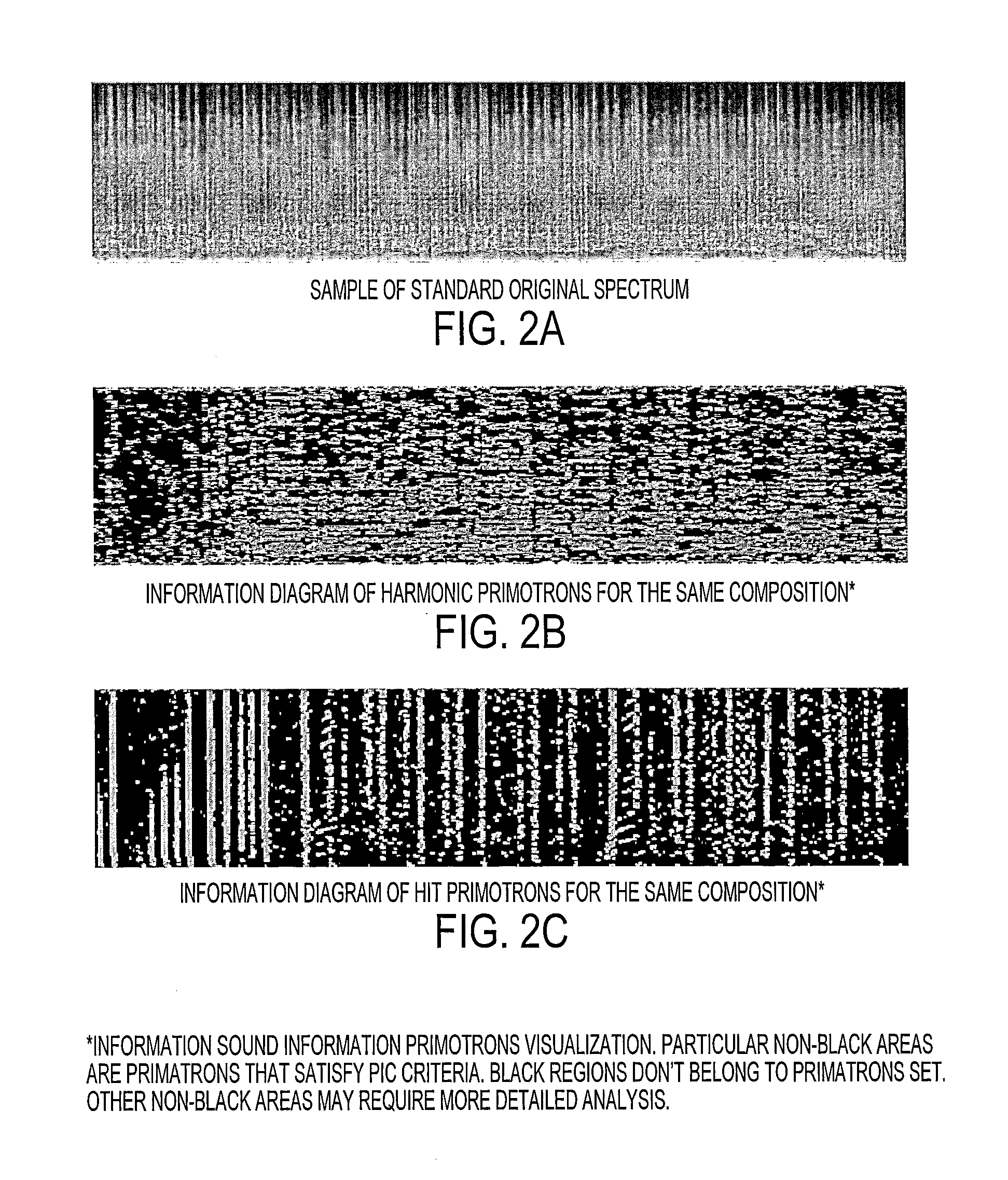Multi-structural, multi-level information formalization and structuring method, and associated apparatus
a formalization and structure technology, applied in the field of information processing, can solve the problems of reducing the overall signal informativeness, reducing the number of reference samples, and other attempts at a more abstract universal representation of music, etc., and achieves the effects of reducing the overall signal informativeness, reducing the number of reference samples, and reducing the number of data
- Summary
- Abstract
- Description
- Claims
- Application Information
AI Technical Summary
Benefits of technology
Problems solved by technology
Method used
Image
Examples
Embodiment Construction
[0039]The present disclosure now will be described more fully hereinafter with reference to the accompanying drawings, in which some, but not all aspects of the disclosure are shown. Indeed, the disclosure may be embodied in many different forms and should not be construed as limited to the aspects set forth herein; rather, these aspects are provided so that this disclosure will satisfy applicable legal requirements. Like numbers refer to like elements throughout.
[0040]Several contemporary main theories of certain phenomena are based on relatively simple principles of optimality formulated in a single phrase. Yet, to come to such simple formulations generally required a significant and time-consuming evolution with respect to the underlying theory. For example, geometrical optics is based on the principle of a minimum of movement along the light beam, mechanics exploits the principle of a minimum of action, thermodynamics is based on the principle of a maximum of entropy, evolution ...
PUM
 Login to View More
Login to View More Abstract
Description
Claims
Application Information
 Login to View More
Login to View More - R&D
- Intellectual Property
- Life Sciences
- Materials
- Tech Scout
- Unparalleled Data Quality
- Higher Quality Content
- 60% Fewer Hallucinations
Browse by: Latest US Patents, China's latest patents, Technical Efficacy Thesaurus, Application Domain, Technology Topic, Popular Technical Reports.
© 2025 PatSnap. All rights reserved.Legal|Privacy policy|Modern Slavery Act Transparency Statement|Sitemap|About US| Contact US: help@patsnap.com



